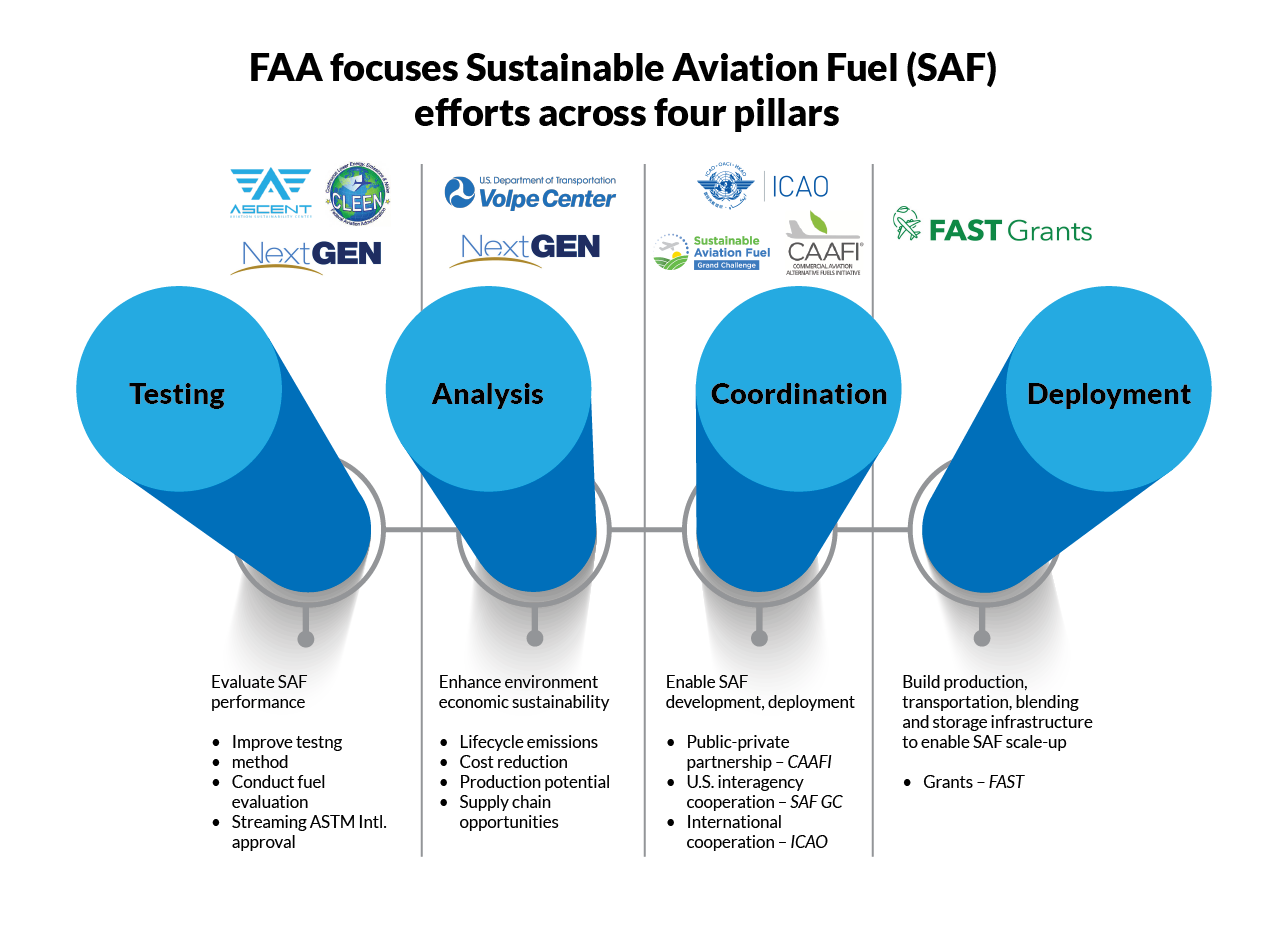Energy
The Office of Environment & Energy’s Energy Division (AEE-500) is a team of professionals that manage a portfolio of research and development efforts to enable the safe use of novel energy sources in aviation. The division carries out activities that include: testing and evaluation of new fuels; analysis to better understand the economics, environmental benefits, policy impacts and potential supply of new energy sources; coordination across the U.S. government, with industry partners and internationally to advance new energy sources; and, grants to support production, transportation, blending, and storage infrastructure to enable SAF deployment by industry.
Sustainable Aviation Fuels (SAF)
Sustainable Aviation Fuels (SAF) enable rural economic development, support domestic energy security, and may significantly reduce carbon emissions within aviation. These fuels will play a critical role, alongside new aviation technologies and more efficient operations, in meeting the industry supported goal of net-zero emissions for the aviation sector by 2050. Drop-in SAF can be used in today’s aircraft fleet without any changes or modifications to the fuel-handling infrastructure and are produced from a variety of feedstocks including biomass, residues, wastes, and gaseous sources of carbon.
The FAA is at the forefront of advancing the production and use of SAF not only in the United States, but also around the world. View our Sustainable Aviation Fuels (SAF) page to learn more about the FAA’s actions.

Energy Division efforts are conducted in partnership with a wide range of aviation stakeholders that leverage resources from the private sector. ASCENT, like all FAA COEs, requires a one hundred percent cost-share from non-federal sources and benefits from an advisory committee with robust participation from a wide range of aviation stakeholders, including industry. CLEEN is a public-private partnership where the industry contributes a cost share that matches or exceeds the amount provided by the FAA. As a coalition among the FAA, airlines, aircraft and engine manufacturers, industry, and other U.S. government agencies, CAAFI® lends a collective focus to the combined effort to enable the emerging SAF industry. These partnerships are critical to sustaining the effort to develop novel jet fuels and will help ensure aviation has a wide range of energy options for decades to come.
